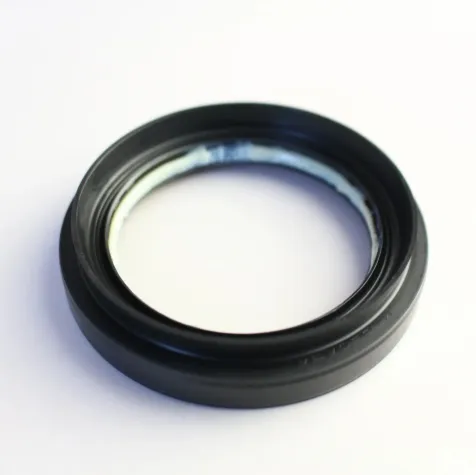Comprehensive Guide to Automotive Oil Seals: Protecting Your Engine and Shafts
In any vehicle, automotive oil seal components play a crucial role in ensuring the engine and other mechanical systems operate smoothly and without leaks. Also known as automobile oil seals or auto oil seals, these small but vital parts prevent oil from leaking out of the engine, transmission, or other components where lubrication is critical.

An automotive oil seal functions by sealing the gap between stationary and moving components, such as shafts and housings. This prevents the escape of lubricating oil and protects the mechanical parts from contamination by dirt, dust, and moisture. Without properly functioning seals, engines can suffer from oil leaks, leading to poor lubrication, overheating, and eventually, serious damage.
Automotive shaft seals are a specific type of oil seal used on rotating shafts, such as the crankshaft or camshaft. They maintain the pressure inside the engine and keep oil inside while keeping harmful contaminants out.
Types and Applications of Car Engine Oil Seals
Different vehicles and components require various types of car engine oil seals designed to meet specific requirements of size, material, and durability. Common materials for these seals include nitrile rubber, silicone, and fluorocarbon, chosen for their resistance to heat, oil, and wear.
A typical car oil seal consists of a flexible lip that tightly grips the shaft, a metal casing for structural support, and sometimes a spring to maintain pressure against the shaft. This design helps maintain an effective seal even under extreme temperatures and pressure fluctuations.
Engine oil seals are found in many locations on a car, including:
The crankshaft seal, which prevents oil leakage where the crankshaft exits the engine block
The camshaft seal, sealing oil around the camshaft areas
Transmission shaft seals, keeping transmission fluid contained
Each seal plays a key role in preventing leaks and maintaining optimal lubrication, which is essential for engine longevity and performance.
Maintaining and Replacing Auto Oil Seals
Proper maintenance of automotive oil seals helps prevent unexpected oil leaks and engine damage. Over time, seals can harden, crack, or wear out due to heat, friction, and exposure to chemicals. Signs of a failing seal include visible oil leaks, low oil levels, or unusual engine smoke.
When replacing a car engine oil seal or any engine oil seals, it’s important to:
Choose the correct seal size and material specific to your vehicle model
Ensure the mating surfaces and shafts are clean and free from damage before installation
Use proper tools for seal installation to avoid damage and ensure a tight fit
Professional service is often recommended for replacing auto oil seals, especially for those located in hard-to-reach areas like the crankshaft or camshaft.
Protect Your Vehicle with Quality Automotive Oil Seals
From automotive shaft seals to specific car oil seals used in engines and transmissions, these components are fundamental to preventing oil leaks and maintaining your vehicle’s performance. Investing in high-quality automobile oil seals and keeping up with maintenance can save you from costly repairs and ensure your engine runs efficiently for years.
Understanding the different types of auto oil seals, their functions, and maintenance tips empowers car owners to keep their vehicles in top shape and avoid the pitfalls of oil leaks.
-
High-Quality Seal 12x22x5 for Industrial & Automotive Use | YJM Seal
Newyddion Nov.25,2025
-
Seal 12x20x5: Precision Radial Shaft Seals for Industrial Reliability
Newyddion Nov.24,2025
-
Seal 12x18x5: Essential Guide to Specifications, Applications & Vendors
Newyddion Nov.24,2025
-
Understanding Seal 12 20 5: Applications, Specifications & Industry Insights
Newyddion Nov.23,2025
-
Durable Oil Seal 85x110x12 – Reliable Sealing Solutions for Industry
Newyddion Nov.23,2025
-
Durable and Precise Oil Seal 75x95x10 for Efficient Machinery | YJM Seal
Newyddion Nov.22,2025
-
Durable Oil Seal 75x100x10 for Reliable Industrial Performance | YJM Seal
Newyddion Nov.22,2025
Categorïau cynhyrchion















